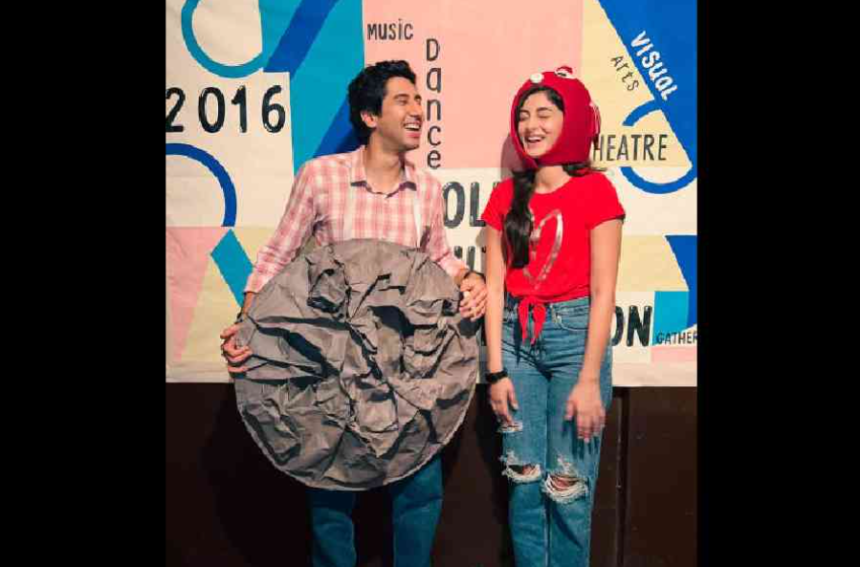CTRL appears to be incredibly different from anything that has been out recently based on the trailer, premise, and genre. But given that it’s about the dangers of social networking, it seems appropriate. What served as the foundation?
Screenlife is a type of visual narrative that is totally displayed on a computer, tablet, or smartphone screen. I think this format is amazing. In communication, the creators of the 2018 American screenlife film Searching expressed their desire to produce films in India. When they asked if I would direct a movie in this genre, I said, “Of course!” I adore this arrangement.
I gave AK vs AK author Avi (Avinash Sampath) a call and asked for suggestions. We had all the time in the world during the peak of the pandemic. We were kicking around ideas until this one really got us. What if we developed a movie about an influential couple that breaks up unexpectedly and then bad things start happening?
People were thinking about artificial intelligence (AI) back then, but it wasn’t what it is now. We didn’t think it would get this big, but all of a sudden it’s so important and pressing. The joke is that we didn’t realize we were filming a realistic movie; instead, we thought we were doing a science fiction movie! (laughs)
CTRL was shot in January and February of 2023. The shoot lasted about sixteen days. But the post-production process has taken us sixteen months. This is a result of the screen having to be entirely redone from scratch. We had to create a screen, add text, and adjust the size of high-definition video. After the film has been filmed, you are practically finished with the shot breakdown. That was a laborious process. It took a long time to get all the VFX things right.
What genre would you say CTRL falls into, if you were to define it?
Cyber thriller, tech thriller, I suppose.
Does it start to sound like mumblecore?
No, it’s not that independent. A large portion of mumblecore would be spontaneous and unplanned. CTRL has greater organization. It was scripted. It is, above all, a thriller about screenlife. Despite the existence of movies such as Unfriended, Missing, and Searching, this genre is still relatively young.
I asked you whether it was a version of your movie Trapped when we met during AK vs AK, and you said that all of your movies are, in some way, Trapped. Is CTRL the online equivalent of Trapped?
Every movie isn’t about someone who is in some sort of trap? However, I have never seen a movie that seemed to be a parody of another movie. The intriguing plot of CTRL is set in a relevant era. It discusses AI, influencer culture, and how quickly we write individuals off and disregard their perspectives. It discusses being alone.
We are all spending a lot of time online. This movie uses the current culture to tell you a tale about something you may not know much about, but in reality, you probably know a lot about. This movie is similar to peering over someone’s shoulder at a laptop screen. It feels voyeuristic.
Which aspect of working in this genre was the most difficult?
Ananya Panday’s role, a human, converses with an AI character for a significant portion of the movie. We needed to find a way to make that work. The actor is speaking to an AI character, not another human, therefore I was unable to advise her to envision speaking to someone else. We needed to work out the setup for that. We had to give it a genuine vibe. A great deal of technological know-how went into that. Research and development (R&D) was done to figure out how to build the AI character and integrate it into a motion-capture dialogue. It was up to us to figure out how to film that kind of material. We used our phones to take a lot of photos. After that, we had to work on the film, figuring out how to move the camera to create an immersive watching experience.
We wanted to avoid giving the audience too much or too little to do. Working on all the text that needed to be filled in at every location was another difficult task. The most time-consuming component ended up being that. Take a peek at a YouTube page, for instance. Sure, there’s a video, but there’s also a title, a description, comments, like and hate buttons, and recommendations for other videos. It was difficult to create the following and comments on our own. However, my incredible staff used a lot of creativity in their work. You can become engrossed in the narrative after seeing the movie for the first time. You will find numerous easter eggs if you watch it again.
Does this genre tend to be too avant-garde and may be too sophisticated for the majority of viewers?
The movie is incredibly watchable. More entertainment is being consumed by the majority of us on the screens of our mobile phones than on TV or in movie theaters. Individuals are spending more time on social media than in real life! (laughs)
After you get the hang of CTRL’s style, which could be a little odd at first, the tale becomes incredibly immersive. You settle in and begin to follow the characters’ adventures.
Since you shot CTRL in the beginning of 2023, AI has evolved and is constantly altering. Have you needed to revise anything along the way?
Just a tiny amount. One advantage of this structure is that you can make a lot of edit stage adjustments because so much work is done in post-production. In fact, by the time we finished the movie, the AI character we had developed in the beginning of 2023 appeared really archaic. To give the character a more contemporary appearance, we had to remodel it.
Why did you choose Ananya Panday to be the main character?
She is outstanding! She performed flawlessly in Gehraiyaan. She has a very new quality about her. She aspires to portray a variety of roles and is also highly motivated. She expresses herself quite well. She has a self-deprecating tone that comes through in both CTRL and Call Me Bae. She doesn’t take herself too seriously, which is a really valuable quality for an actor. She puts a lot of effort into her work.
Did you discover anything about this world throughout your research that shocked you?
I was shocked to learn how much we enjoy taking a glimpse inside other people’s life when doing research on influencers. I found that to be an intriguing realization. Every day they are live-blogging about their lives. It looks like a lot of work.
Users log on to see what an influencer is eating, wearing, traveling to the airport, flying, driving, visiting a temple, or eating their mother’s homemade breakfast. It was fascinating and a touch melancholy, in my opinion (smiles). As a viewer, you are most likely viewing vlog number 450 because you have developed a viewing habit of watching for that ten minutes while taking the train every day.
What kind of connection do you have with social media?
Every other day, I uninstall and then reload Instagram! I could no longer stand it, so I completely deleted my account on Twitter (now X). I refer to it as the high horse sewage. In life, everything ought to be done in moderation. This, in my opinion, is also the connection between mental health and social media. This is going to be a topic of much future discussion.
I’ve come to realize that I doom-scroll far more when I’m feeling down. That is not conducive to my mental health. For many others, I’m sure it’s the same. However, it’s difficult to completely avoid social media because, to us all, all of these likes and comments are dopamine hits. People do it for that reason.
Have you recently seen anything that particularly impressed you for thinking beyond the box?
The third season of The Bear touched me. We are constantly wondering what the limits of creativity are and what type of person you can be, so it kind of touched home. Jeremy Allen-White’s character Carmen is attempting to come to that realization on his own, and this season really connected with me.
Since it demonstrates that there are no longer any restrictions, that series has been a revelation in a technical sense. There are episodes that are an hour long, ones that are longer montage shots, and single shots. Whether it’s House of the Dragon or Shogun, the storytelling in series format is truly taking chances.
Are you also trying to transition to a setting where there are less or no storytelling rules, as you did with AK vs. AK and now CTRL?
The fact that the performers and the relevant studio supported me allowed me the luxury of making a CTRL or an AK vs. AK. The most liberating thing I have ever done is play AK vs AK. Simply putting the camera on, rolling for eight minutes, and letting those two performers (Anil Kapoor and Anurag Kashyap) do their thing was so much joy.
That kind of flexibility to make movies is what I adore. However, I also think that theater is open for grabs and that there are a lot of fascinating things that may be done there.
Genre films have performed incredibly well in theaters over the past year or two. The six-quadrant movies’ crutches—that is, their obligation to appeal to both rich and poor, male and female, young and old—are superfluous for genre pictures. These guidelines are being disregarded, and we’re discovering niches where people may succeed without trying to check every box.








